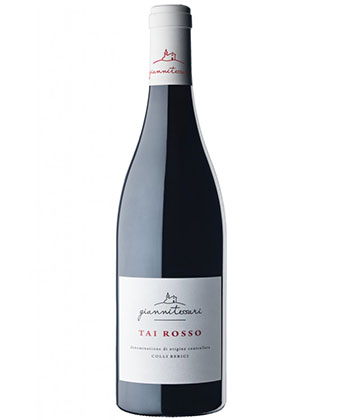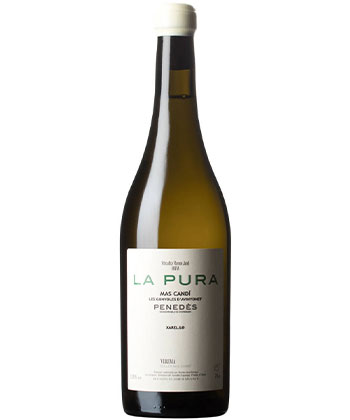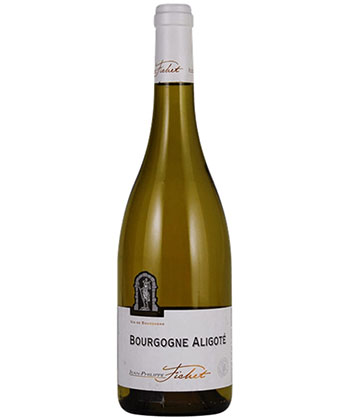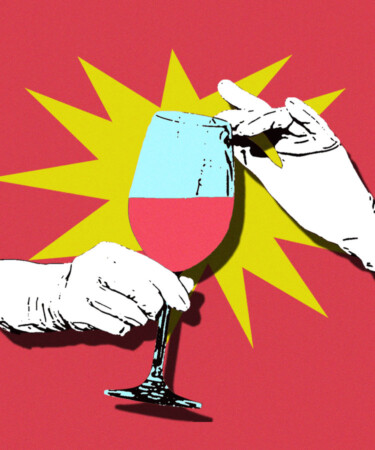If you drink wine on a regular basis, chances are you have a go-to glass or grape you gravitate to on menus or your local shop. But if you’re in the mood to shake up your standard order in favor of something a bit unexpected, then you’ve come to the right place. Seeking expert advice, we asked sommeliers for the overlooked and underappreciated bottles, grapes, and wine styles they are currently coveting.
As it turns out, there’s much value to be found outside the tried-and-true. From a salty, refreshing, Loire Valley white that’ll be your new favorite oyster pairing to a juicy, Chilean red that will delight any Beaujolais lover, our somms’ picks make the case for abandoning routine. Keep reading to see what the pros had to say.
The Most Underrated Wines, According to Sommeliers:
- Muscadet
- Vermentino
- Wine made from the native grapes of Portugal
- Pinot Gris
- Chenin Blanc from the U.S. and South Africa
- Riesling
- Tai Rosso
- Rosé Champagne
- New Zealand Pinot Noir
- Sweet, aged wines such as Rivesaltes
- Italian white wines made from indigenous grapes
- White wine from Sardinia and Greece
- Celler Mas Candí La Pura Xarel-lo
- La Garagista Winery wines
- Greek blends and monovarietal wines that feature the Agiorgitiko grape
- Wine made from rare grapes or without a denomination of origin
- Finger Lakes Riesling
- Albariño
- South African Chenin Blanc from Swartland
- Portuguese white wine from Douro, Bairrada, and the Azores Islands
- Bourgogne rouge or Langhe Nebbiolo
- Jean-Philippe Fichet Aligoté
- Wines from Chilean producer Paula Chodin Param
“At the risk of losing cool points — though I didn’t have many to start with — I repeatedly find Muscadet underrated. The wine world is heavily influenced by the fashion of the moment, and unfortunately, Muscadet isn’t very trendy. But you can find affordable but lovely examples, as it’s low-cost to vinify in its younger form and the Melon de Bourgogne varietal is very suited to this style. It’s very fresh, pretty, and delicate but with a lively acidity and salinity. There are also more complex versions with beautiful silkiness and texture and a creamier mouthfeel, but with a similar freshness and salty bite. All this to say, Muscadet is my one love, and I encourage people not to overthink it and happily try a bottle.” —Gabriella Borg Costanzi, general manager, Le Crocodile, Brooklyn
“I think Vermentino from Italy is so underrated — [it has] great acidity and approachability. It’s super food-friendly and is recognizable in style and structure to Pinot Grigio or Sauvignon Blanc drinkers at a bargain price point.” —Bill Brillinger, sommelier, The Betty at The Kimpton Sylvan Hotel, Atlanta
“Wines made from the native grapes of Portugal. I just recently tasted with the winemaker from Gota Wines and her Vinho Verde is incredible. Not the slightly effervescent sort that you might expect, but a truly terroir-expressive version. So electric and fresh!” —Lisa Komara, beverage director, Blackfoot Hospitality (The Mary Lane, Market Table, The Clam, & The Little Owl), NYC
“Pinot Gris! Some think that it’s this wimpy wine with no flavor. But there are amazing Pinot Gris out there, such as [the 2021 Pinot Gris The Eyrie] from Eyrie Vineyards.” —Thomas Dunn, general manager and sommelier, LittleMad, NYC
“From wines that are thirst-quenching and playful to age-worthy and complex [as well as] some of the most exciting sparkling wines on the market, Chenin Blanc is truly versatile. Chenin’s food-friendly character makes it a perfect everyday white wine. While France may be the ancestral home to this grape, there is excellent Chenin Blanc grown in the United States and South Africa at a wide range of price points, making the wine an under-the-radar choice for any occasion or budget.” —Mark Patykewich, director of food & beverage/wine director, The Katharine at The Kimpton Cardinal Hotel, Winston-Salem, N.C.
“Riesling, of course! The reason somms all love Riesling is because it is a workhorse when it comes to pairing. It can be bone-dry or supplely sweet [that’s] balanced with searing acidity — all which can handle the heat of spice or the fat and salt of so many foods. It can also be sparkling and the perfect aperitif! And you can get incredible wines that rival Burgundy without breaking the bank. It’s extremely versatile as a variety, not to mention it just makes downright delicious wines.” —Marianna Caldwell, sommelier and general manager, Cassia, Santa Monica, Calif.

“In my opinion, the pairing of red wine with fish gets overlooked and is underrated. One of my favorite underrated wines is Tai Rosso, an amazing light red from the Veneto region [that’s] fruity with medium acidity and smooth tannins — perfect for baccalà alla vicentina.” —Camilla Battoni, general manager and sommelier, Centrolina, Washington, D.C.
“Rosé Champagne! People still often think that rosé wine is going to be sweet and shy away from ordering it. Rosé Champagne has such a wide range of styles — it can be intensely fruit-forward and vinous or elegantly textured and mineral-driven. I find rosé Champagne to be a versatile food pairing and it should be on everyone’s radar.” —Catherine Fanelli, wine director, Mel’s, NYC
“In a country with an unending thirst for Oregon Pinot Noir and a fascination (read: obsession) with culty Burgundy producers, it’s surprising that New Zealand Pinot Noir doesn’t quite get the recognition it deserves here in America! While many of us are familiar with Marlborough Sauvignon Blanc, Pinot Noir truly shines as New Zealand’s hidden gem. With its diverse soil types and predominantly cool climate, New Zealand offers a wide stylistic diversity in Pinot Noir. The common threads for me in these wines are intense floral aromatics, a lively core of red fruit notes, and pleasantly persistent tannins. So, the next time you’re shopping for something special, ask your local specialty wine shop for a bottle of New Zealand Pinot. A great bottle shouldn’t set you back more than $30!” —Grant Richardson, owner, The Violet Crown Wine Bar & Coffee Shop and Pangea Selections, Austin, Texas
“Sweet wine will probably always be the most underrated wine, especially aged ones like Rivesaltes, with flavors of brown butter and salted caramel that are incredibly useful for pairings. On the dry side, Italian white wines made from indigenous grapes are also routinely overlooked despite the value and variety that’s out there. I’ll take a bottle of Fiano, like the Ciro 906 from Ciro Picariello, over Sancerre any day.” —Chris Ray, advanced sommelier, Lutèce, Washington, D.C.
“I believe the most underrated wines are crisp whites from Sardinia and Greece. These old-school regions have been making wine since wine began, and their island climates support the theory of ‘what grows together goes together.’ Nothing is better than a zippy Vermentino or a razor blade-sharp, citric Assyrtiko to go with your favorite fish dish, lemon pasta, or salads. Everyone is all about Sancerre right now, causing the prices to skyrocket with a short supply. Save the extra expense and try the other classics — crisp whites from the Mediterranean regions that satisfy the craving for half the cost.” —Elli Benchimol, advanced sommelier and libation consultant, Upside on Moore, Rosslyn, Va.

“Celler Mas Candí La Pura Xarel-lo. While Cava is often misunderstood in its own right due to its reputation for cheap, mass-produced sparkling wine, I find that it’s one of the blending varieties, Xarel-lo, that is often underrated for its quality as a still wine. Historically, many of the growers in Penedès sold the bulk of their production to large Cava houses to scratch out a living, but a younger generation of farmers in the region has shifted their farming practices [and is] bottling their own wines. Mas Candí is a perfect example of this growing trend, making beautifully textured and mineral-driven Xarel-lo that is both easy to drink and food-friendly.” —Will Taylor, sommelier, La Compagnie des Vins Surnaturels, NYC
“I think that Deirdre Heekin of La Garagista Winery is underrated. Deirdre makes biodynamic wine in Vermont from local hybrid grapes, whereas almost all other wine made in the United States and around the world is made with the European Vitis vinifera grapes. Deirdre is passionate about regenerative and sustainable farming practices, but also makes wine that is unique yet classic, and loved by sommeliers for its profound sense of place.” —Kylie Monagan, sommelier and partner, Calissa, Juniper at The Vanderbilt and Amali, NYC and N.Y.
“Greek reds don’t get enough attention, especially blends and monovarietal wines that feature the Agiorgitiko grape from Nemea in the Peloponnese region. The grape suffers from a name that is difficult to pronounce and spell, which definitely contributes to its underrated-ness. There’s great, widely available bottles made from Agiorgitiko by wineries like Skouras and Gai’a that feature medium-plus body, spice, and plummy flavors that will compare and rival more popular wines made from Malbec and Syrah. Producers even blend the grape with varieties like Cabernet Sauvignon and age in oak, resulting in wines that taste very similar to Bordeaux but for half the price.” —Danya Degen, general manager and sommelier, Meli Wine & Mezze, Washington, D.C.
“The most underrated wine is one that doesn’t have a known grape or a denomination of origin attached to it. The world is a crazy place and many of us love something comforting to drink, whilst the little-known but bursting-with-flavor Vitovska (a white grape of Slovenia) or Arribes (a Spanish wine region bordering Portugal) may be living a few wines down on the menu.” —Jill Mott, director of wine, The Carlyle, A Rosewood Hotel, NYC
“In my opinion, the most underrated wine is Finger Lakes Riesling, especially the dry ones. It’s unmatched in quality for price and pairs so well with a variety of different foods. With such delicate flavors, Rieslings are perfect for lunch, aperitifs, and for starting off any meal.” —Mirko Galliani, sommelier, L’Avenue at Saks, NYC
“These days, Sauvignon Blanc is arguably the most popular white wine, so I find that a Spanish Albariño is currently the most underrated wine. Albariño has the same grapefruit flavors and high acidity as a New Zealand Sauv Blanc, but is more complex with mineral and saline flavors and a softer palate, making it much friendlier to pair with food.” —Bernadette James, sommelier, Stages at One Washington and The Living Room, Dover, N.H.
“I think the most underrated wine category is a bit of a tie between South African Chenin Blanc from Swartland and Portuguese white wine, particularly from Douro, Bairrada, and the Azores Islands. Sommeliers have definitely caught on to these two categories, but broadly speaking, it’s still not on the radar for general consumers. Both of these categories have textural white wines with fresh acidity, and they can oftentimes outperform the wines of other lauded regions while providing a similar drinking experience.” —Luke Boland, wine director, Press Club Grille, NYC

“For me, the easiest place to find underrated wines are in the generic appellations, like Bourgogne rouge or Langhe Nebbiolo. Here, one can find delicious wines at a fraction of the price compared to the more prestigious versions. Oftentimes, the thing you lose out the most is ageability. Piero Benevelli in Piedmont offers a compelling under-the-radar Barolo, but the Langhe usually retails for under $30. It’s no longer a secret that there are top-quality producers in Burgundy that make some exceptional Aligoté. You can get a sense for what makes Burgundy so special, and a feel for the winemaking from these bottlings at a fraction of the cost of the other wines from a domaine. Jean-Philippe Fichet Aligoté is a wine from one of my favorite producers in Meursault, and it also retails for under $30.” —Cedric Nicaise, sommelier and co-owner, The Noortwyck, NYC
“Parra Libre País. The wines from Paula Chodin Param are some of my favorite reds coming out of Chile right now. Her minimal-intervention wines from Itata and Bío Bío offer a special opportunity to drink 200-plus-year-old-vine País from regions that should be on everyone’s radar. Paula’s Parra Libre País is a perfect next step for Beaujolais drinkers looking to try something new, and her commitment to creating an economically viable relationship between winemakers and growers is something I hope to see more of in coming years.” —Maggie Dahill, general manager and wine director, Theodora, NYC
*Image retrieved from Viktoriia via stock.adobe.com
